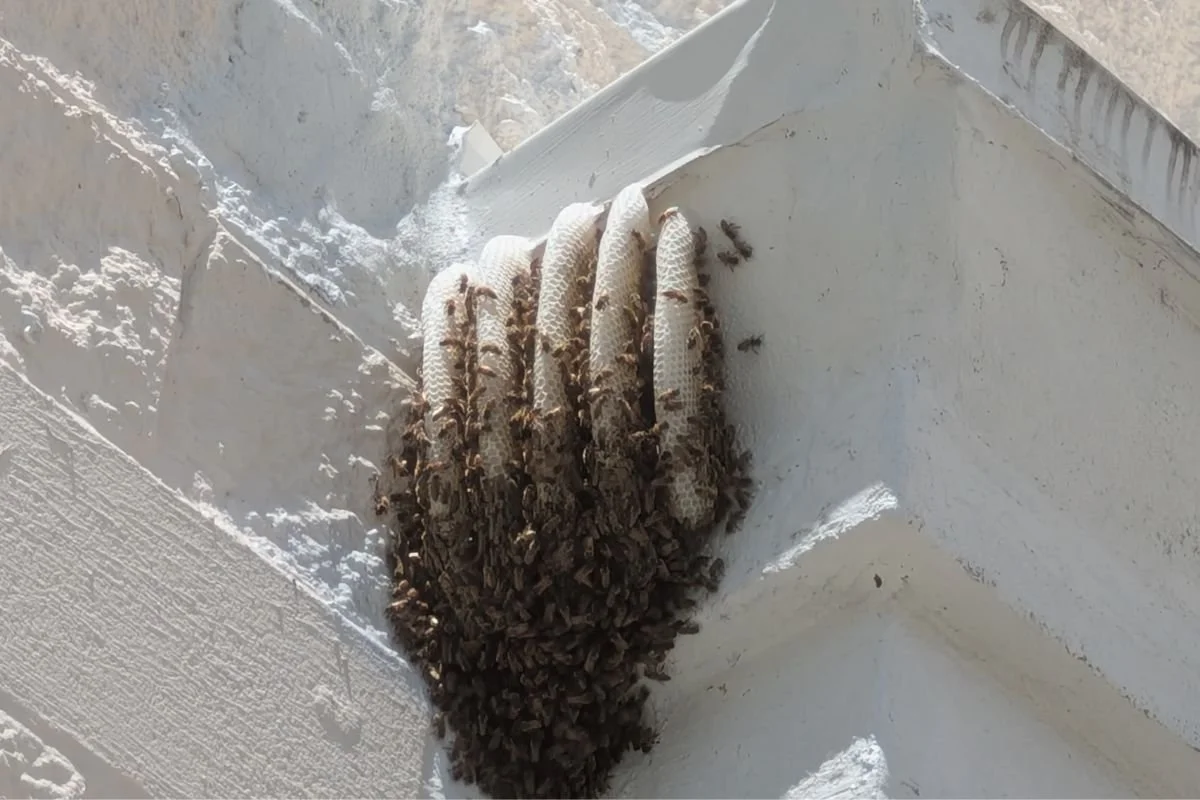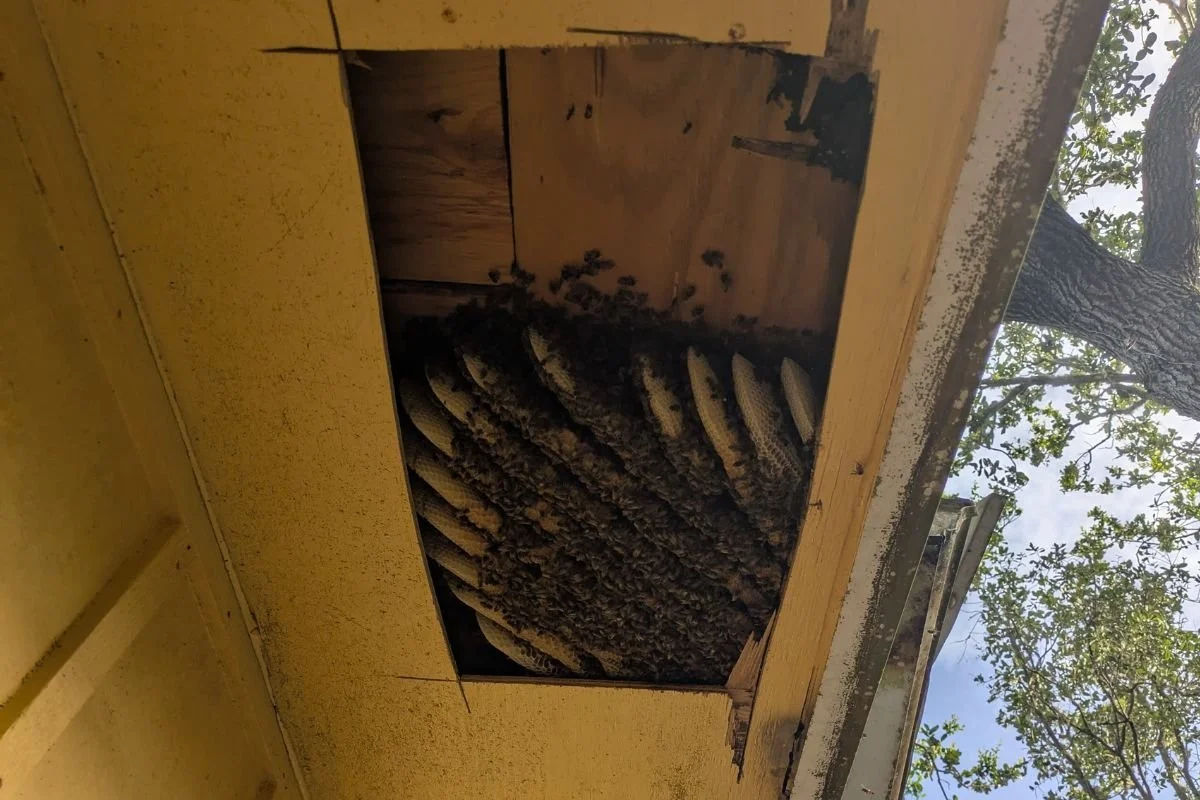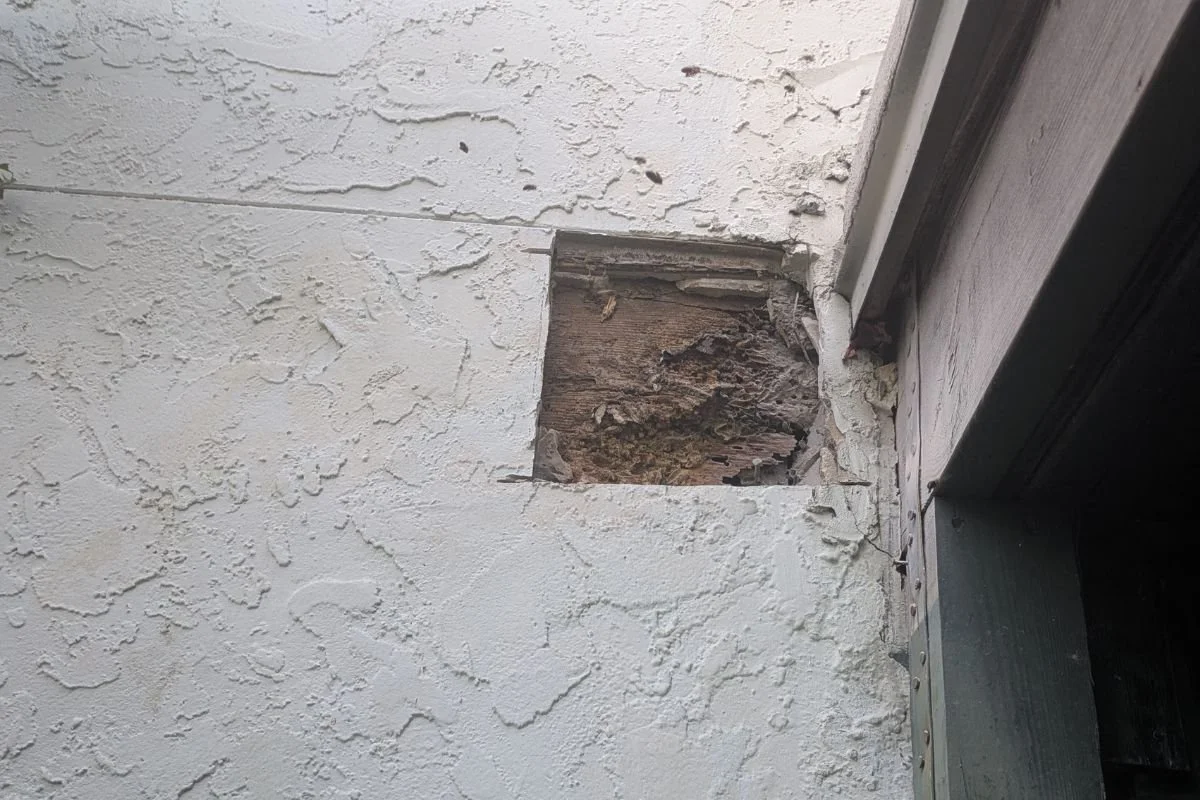🏠 Why Bees Choose Homes Over Trees: The Surprising Truth.
🐝 Introduction: From Forests to Front Porches
Once upon a time, bees built their hives in hollow trees, under rock ledges, or in open woodlands. However, in recent years, an increasing number of bees have been making their homes inside homes, especially in Florida. From walls and attics to soffits and chimneys, these intelligent pollinators have started using manmade structures as prime real estate.
But why are bees choosing homes over trees?
This question may seem simple, but the answer involves a complex interplay of environmental changes, urban expansion, and natural bee behaviors. In this post, we’ll explore the surprising truth behind this shift and explain how it affects both homeowners and the bees themselves.
🌳 Why Trees Are No Longer Ideal for Bees
Before we can understand why bees enter houses, we need to look at why they’re abandoning natural spaces like trees in the first place.
1. Loss of Habitat: Urban development is one of the biggest reasons. As Florida expands with new homes, roads, and shopping centers, natural habitats are shrinking. Mature trees with hollow centers (which bees love) are cut down or cleared, leaving fewer safe nesting options.
2. Climate Stress: Climate change has affected the health of native trees. Stronger hurricanes, increased rainfall, and shifting weather patterns have made many natural hive spots unstable or unsuitable.
3. Predator Pressure: In the wild, bees face threats from predators like raccoons, skunks, and ants. Building hives inside walls and roofs keeps them higher off the ground and better protected from natural enemies.
🧱 Why Bees Are Choosing Homes Instead
If you’re wondering, “Why are bees in my wall or attic?” — the answer lies in how well our homes mimic ideal bee habitats (from the bee’s perspective).
1. Sheltered Spaces: Bees look for dark, enclosed areas with small entrances. Wall cavities, soffits, and attics perfectly replicate the cozy hollows of old trees, offering safety from wind, rain, and sunlight.
2. Stable Temperatures: Concrete walls, wood framing, and insulation help maintain a stable temperature, perfect for keeping brood (bee babies) warm. This is especially important during Florida’s fluctuating weather.
A wild honeybee hive built on a building wall
3. Small Access Points: Bees only need a hole as small as ⅛ inch to enter your home. Common entry points include:
Roof eaves
Foundation gaps
Brick or block weep holes
Utility line holes
Chimney flues
4. Lack of Disturbance: Many parts of a home, like an attic or an unused wall cavity, remain undisturbed for years. This gives bees plenty of time to build, expand, and thrive unnoticed.
🐝 Real Cases of Bee Infestations in Florida Homes
At Eco Bee Removal, we’ve handled hundreds of calls from homeowners across Florida dealing with unexpected bee hives in strange places:
In a Miami home, a hive was found behind drywall in a kitchen wall.
In Orlando, a homeowner heard buzzing — we uncovered a hive stretching across three roof trusses.
In Tampa, bees entered through a cable line hole and built a hive inside a block wall.
In all these cases, the bees chose human structures not because they prefer people, but because our buildings now offer what the environment no longer does.
⚠️ Risks of Bees Living Inside Your Home
While bees are critical pollinators, a hive inside your home can cause serious problems over time:
1. Structural Damage: Large hives can weaken drywall, insulation, and wooden supports. Honey can seep into walls, causing rot, staining, and mold.
2. Attracts Other Pests: Leftover honeycomb attracts ants, roaches, beetles, and rodents, turning a bee problem into a multi-pest infestation.
3. Stings & Safety Hazards: Though bees are not naturally aggressive, they’ll defend their hive if threatened. Children, pets, or allergy-sensitive family members are especially at risk.
4. Fire Hazards: In rare cases, bees nesting near electrical wiring or light fixtures have caused short circuits and fire risks.
🧠 What to Do If Bees Choose Your Home
If you suspect you have a bee infestation, do not block the entrance or try to spray them. This can cause the bees to become aggressive or try to escape into your living space.
Here’s what you should do instead:
✅ Step 1: Confirm the Presence
Bee colony discovered inside a house roof
Look for signs:
Buzzing sounds in the walls
Bees flying in and out of the same spot
Brown stains on walls (from honey or wax)
A warm patch on drywall
✅ Step 2: Call a Professional Bee Removal Service
Choose a licensed, eco-friendly service like Eco Bee Removal that specializes in:
Live bee removal
Hive extraction
Structural repair
Bee relocation (not extermination)
We use safe tools like bee vacuums and thermal cameras to locate and gently remove the entire hive without harm.
🌍 Why Eco-Friendly Bee Removal Matters
At Eco Bee Removal, we believe bees don’t belong in your home, but that doesn’t mean they should be killed.
Instead, we focus on:
Relocation: We safely transport bee colonies to local apiaries or farms where they can continue pollinating.
Preservation: Bees are essential to 80% of the crops we eat.
Education: Helping the community understand bees helps reduce unnecessary extermination.
Every bee we save supports Florida’s fragile ecosystem. When you choose humane removal, you’re not just protecting your house — you’re protecting the future of pollination and biodiversity.
🧰 How to Prevent Bees from Entering Your Home
Once bees are removed, take these steps to avoid future infestations:
“Beehive remains found behind exterior wall.”
🛡️ Prevention Tips:
Seal cracks in walls, foundations, and roofing.
Cover vents with mesh screens.
Remove abandoned furniture or debris near your house.
Inspect eaves and soffits annually.
Keep tree branches trimmed away from your roofline.
We offer bee-proofing consultations for Florida homeowners looking to stay safe and sting-free.
📞 Final Thoughts: Know the Buzz Before It's Too Late
Bees choosing homes over trees isn't just a coincidence — it’s a sign of how much our environment has changed. As natural habitats disappear, bees adapt. Unfortunately, their new homes are sometimes inside yours.
But with early detection, expert removal, and proper prevention, you can stay safe while helping bees find a better place to thrive.
📞 Need Help with Bees in Your House?
Eco Bee Removal provides:
✅ Same-day bee inspections
✅ Live bee relocation across Florida
✅ Wall, attic, and block hive removal
✅ Eco-friendly, humane solutions
📞 Call now: (888) 282-1886
🌐 Visit: www.ecobeeremoval.com
📍 Serving Miami, Orlando, Tampa, and all of Florida



